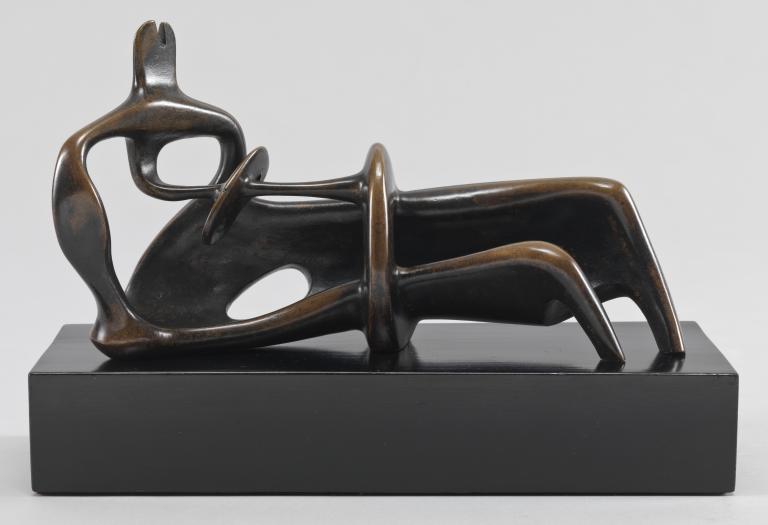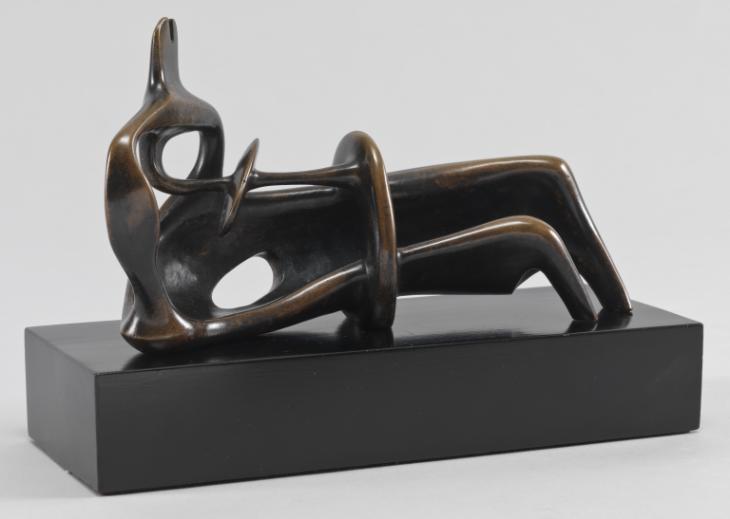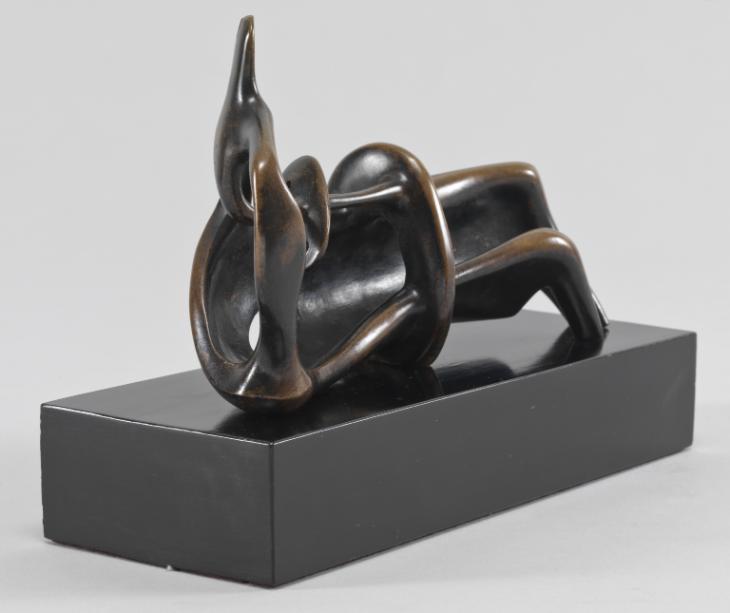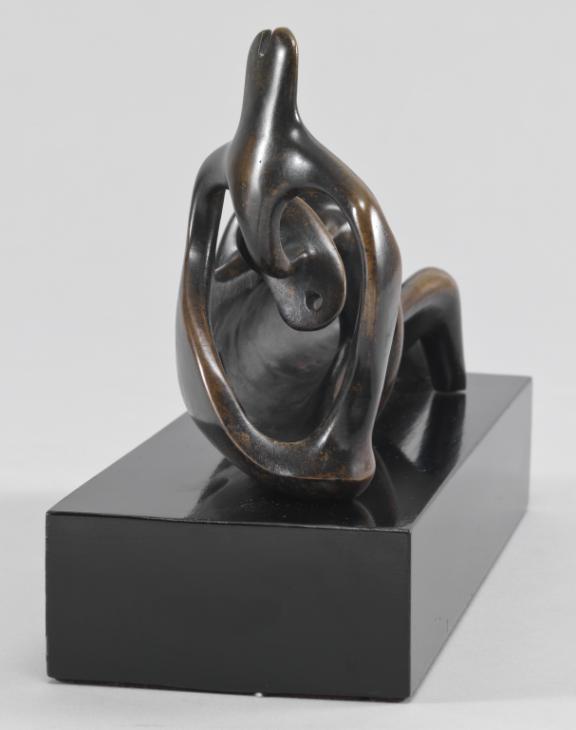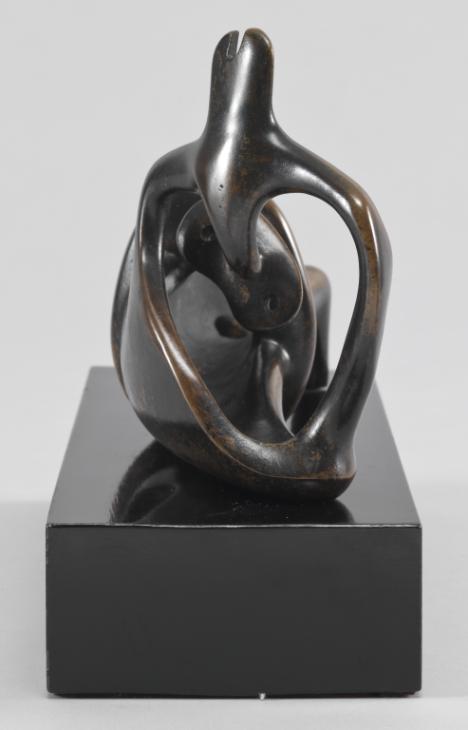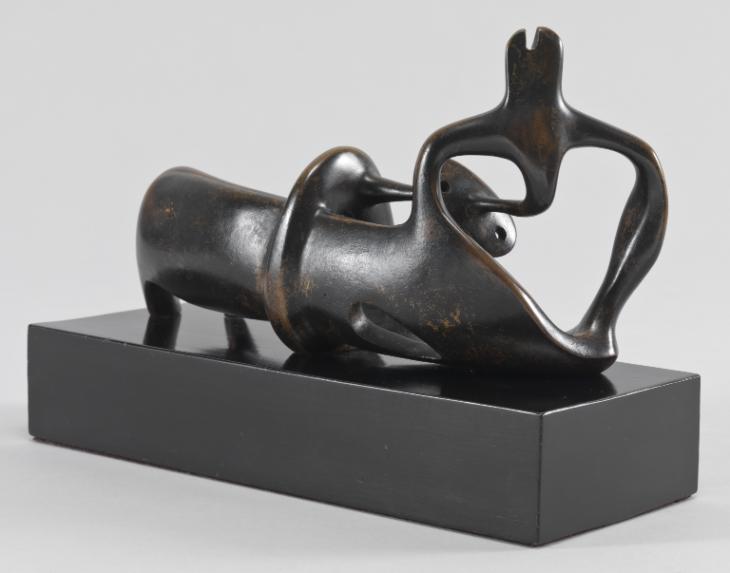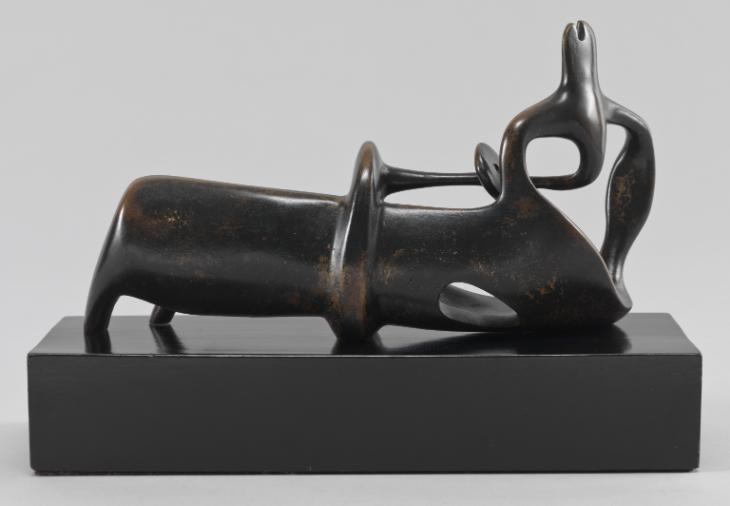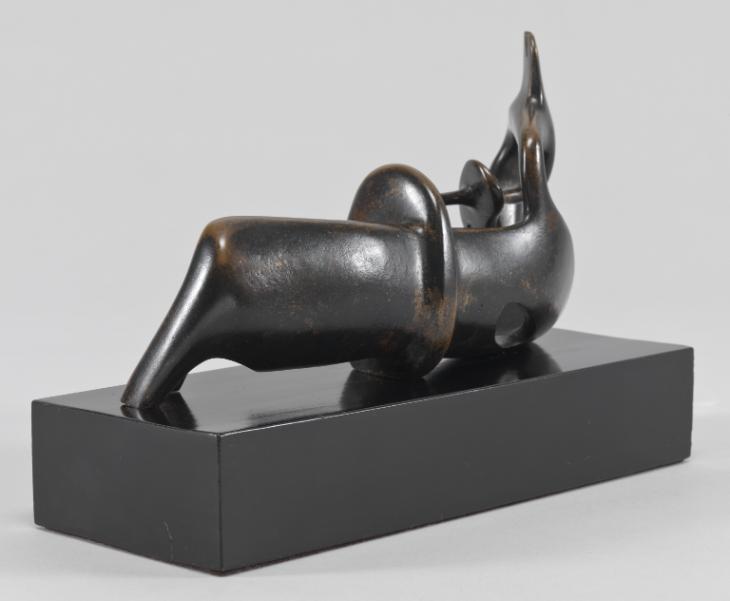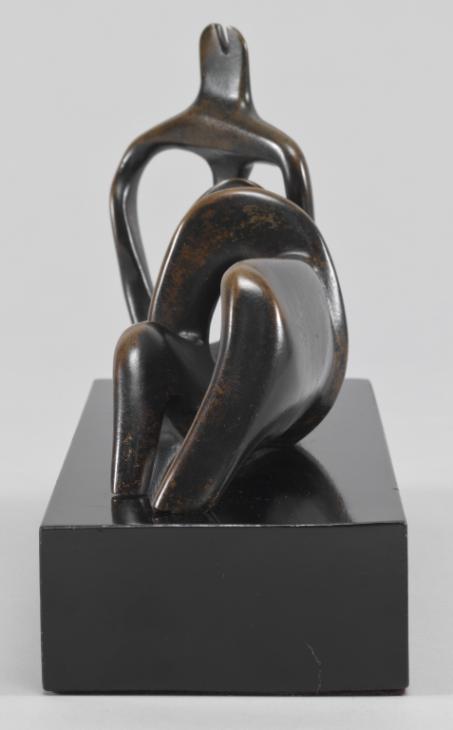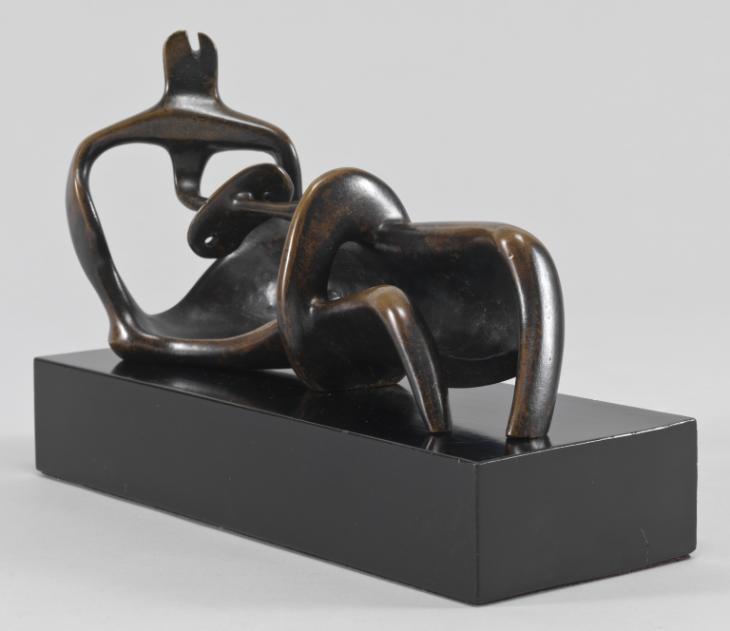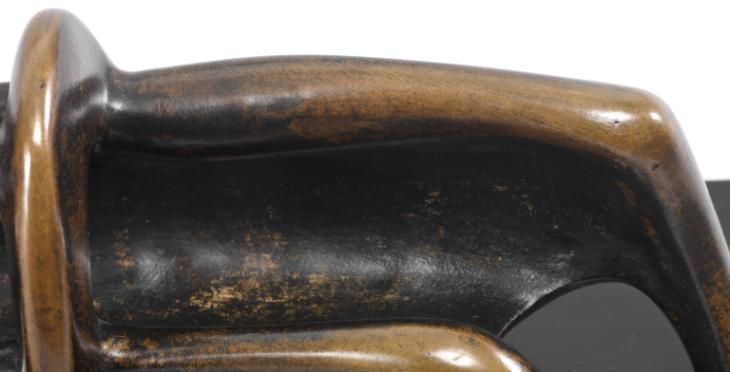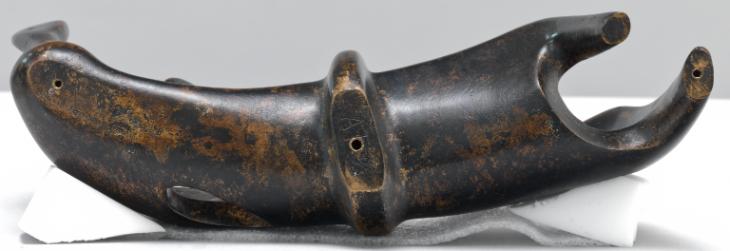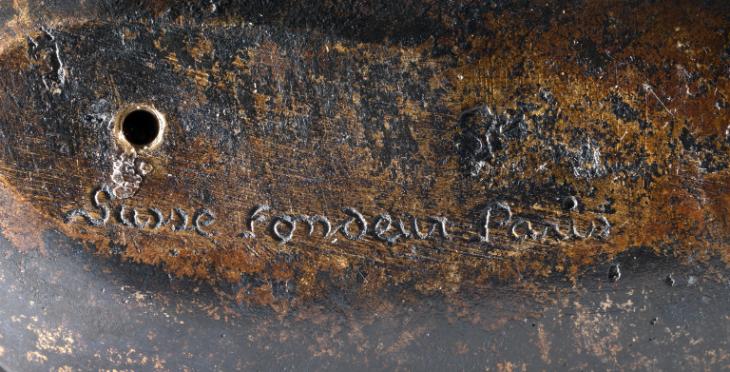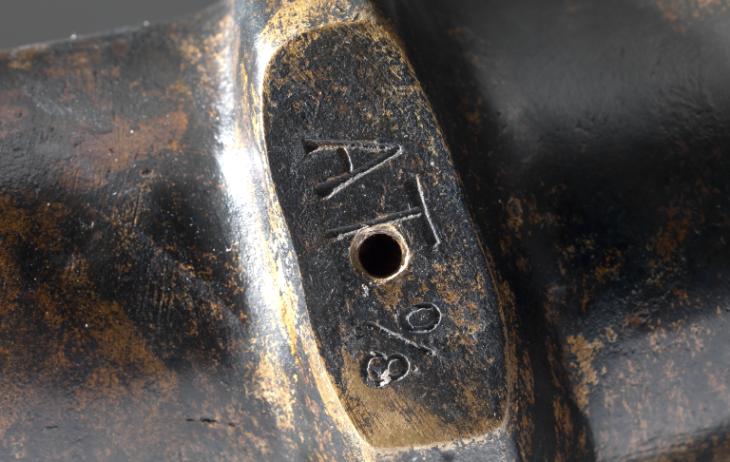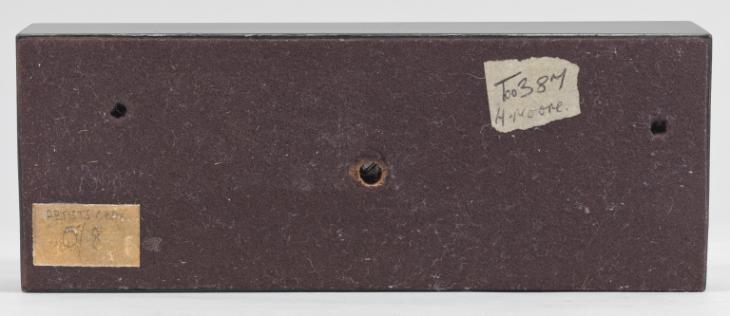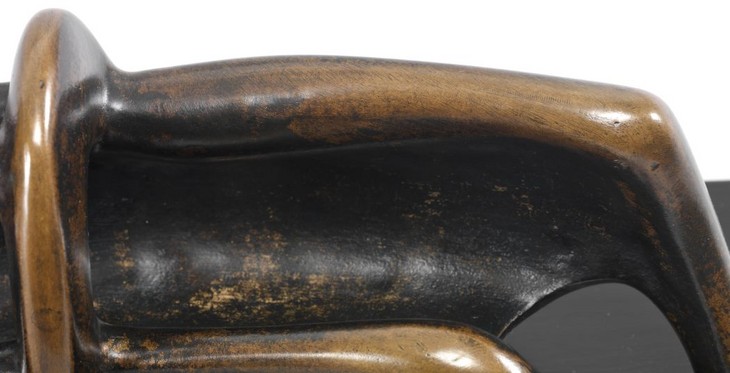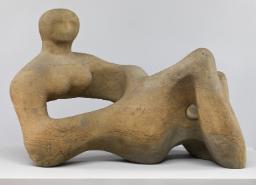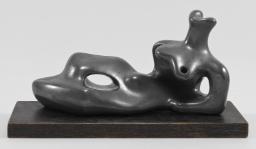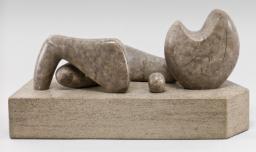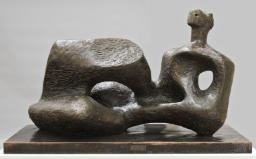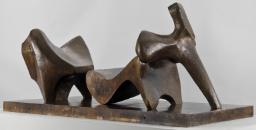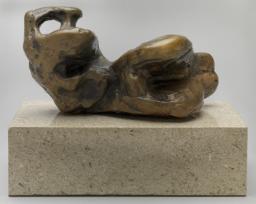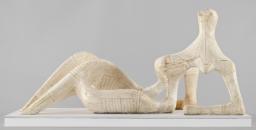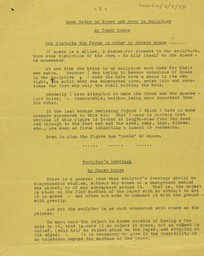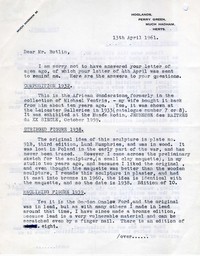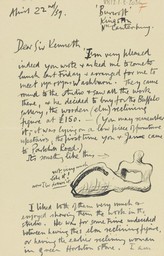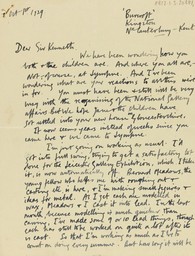Henry Moore OM, CH Reclining Figure 1939, cast 1959
Image 1 of 15
-
 Henry Moore OM, CH, Reclining Figure 1939, cast 1959© The Henry Moore Foundation. All Rights Reserved© The Henry Moore Foundation. All Rights Reserved
Henry Moore OM, CH, Reclining Figure 1939, cast 1959© The Henry Moore Foundation. All Rights Reserved© The Henry Moore Foundation. All Rights Reserved -
 Henry Moore OM, CH, Reclining Figure 1939, cast 1959© The Henry Moore Foundation. All Rights Reserved© The Henry Moore Foundation. All Rights Reserved
Henry Moore OM, CH, Reclining Figure 1939, cast 1959© The Henry Moore Foundation. All Rights Reserved© The Henry Moore Foundation. All Rights Reserved -
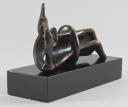 Henry Moore OM, CH, Reclining Figure 1939, cast 1959© The Henry Moore Foundation. All Rights Reserved© The Henry Moore Foundation. All Rights Reserved
Henry Moore OM, CH, Reclining Figure 1939, cast 1959© The Henry Moore Foundation. All Rights Reserved© The Henry Moore Foundation. All Rights Reserved -
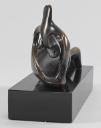 Henry Moore OM, CH, Reclining Figure 1939, cast 1959© The Henry Moore Foundation. All Rights Reserved© The Henry Moore Foundation. All Rights Reserved
Henry Moore OM, CH, Reclining Figure 1939, cast 1959© The Henry Moore Foundation. All Rights Reserved© The Henry Moore Foundation. All Rights Reserved -
 Henry Moore OM, CH, Reclining Figure 1939, cast 1959© The Henry Moore Foundation. All Rights Reserved© The Henry Moore Foundation. All Rights Reserved
Henry Moore OM, CH, Reclining Figure 1939, cast 1959© The Henry Moore Foundation. All Rights Reserved© The Henry Moore Foundation. All Rights Reserved -
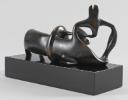 Henry Moore OM, CH, Reclining Figure 1939, cast 1959© The Henry Moore Foundation. All Rights Reserved© The Henry Moore Foundation. All Rights Reserved
Henry Moore OM, CH, Reclining Figure 1939, cast 1959© The Henry Moore Foundation. All Rights Reserved© The Henry Moore Foundation. All Rights Reserved -
 Henry Moore OM, CH, Reclining Figure 1939, cast 1959© The Henry Moore Foundation. All Rights Reserved© The Henry Moore Foundation. All Rights Reserved
Henry Moore OM, CH, Reclining Figure 1939, cast 1959© The Henry Moore Foundation. All Rights Reserved© The Henry Moore Foundation. All Rights Reserved -
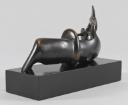 Henry Moore OM, CH, Reclining Figure 1939, cast 1959© The Henry Moore Foundation. All Rights Reserved© The Henry Moore Foundation. All Rights Reserved
Henry Moore OM, CH, Reclining Figure 1939, cast 1959© The Henry Moore Foundation. All Rights Reserved© The Henry Moore Foundation. All Rights Reserved -
 Henry Moore OM, CH, Reclining Figure 1939, cast 1959© The Henry Moore Foundation. All Rights Reserved© The Henry Moore Foundation. All Rights Reserved
Henry Moore OM, CH, Reclining Figure 1939, cast 1959© The Henry Moore Foundation. All Rights Reserved© The Henry Moore Foundation. All Rights Reserved -
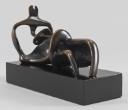 Henry Moore OM, CH, Reclining Figure 1939, cast 1959© The Henry Moore Foundation. All Rights Reserved© The Henry Moore Foundation. All Rights Reserved
Henry Moore OM, CH, Reclining Figure 1939, cast 1959© The Henry Moore Foundation. All Rights Reserved© The Henry Moore Foundation. All Rights Reserved -
 Henry Moore OM, CH, Reclining Figure 1939, cast 1959© The Henry Moore Foundation. All Rights Reserved© The Henry Moore Foundation. All Rights Reserved
Henry Moore OM, CH, Reclining Figure 1939, cast 1959© The Henry Moore Foundation. All Rights Reserved© The Henry Moore Foundation. All Rights Reserved -
 Henry Moore OM, CH, Reclining Figure 1939, cast 1959© The Henry Moore Foundation. All Rights Reserved© The Henry Moore Foundation. All Rights Reserved
Henry Moore OM, CH, Reclining Figure 1939, cast 1959© The Henry Moore Foundation. All Rights Reserved© The Henry Moore Foundation. All Rights Reserved -
 Henry Moore OM, CH, Reclining Figure 1939, cast 1959© The Henry Moore Foundation. All Rights Reserved© The Henry Moore Foundation. All Rights Reserved
Henry Moore OM, CH, Reclining Figure 1939, cast 1959© The Henry Moore Foundation. All Rights Reserved© The Henry Moore Foundation. All Rights Reserved -
 Henry Moore OM, CH, Reclining Figure 1939, cast 1959© The Henry Moore Foundation. All Rights Reserved© The Henry Moore Foundation. All Rights Reserved
Henry Moore OM, CH, Reclining Figure 1939, cast 1959© The Henry Moore Foundation. All Rights Reserved© The Henry Moore Foundation. All Rights Reserved -
 Henry Moore OM, CH, Reclining Figure 1939, cast 1959© The Henry Moore Foundation. All Rights Reserved© The Henry Moore Foundation. All Rights Reserved
Henry Moore OM, CH, Reclining Figure 1939, cast 1959© The Henry Moore Foundation. All Rights Reserved© The Henry Moore Foundation. All Rights Reserved
© The Henry Moore Foundation. All Rights Reserved
Henry Moore OM, CH,
Reclining Figure
1939, cast 1959
© The Henry Moore Foundation. All Rights Reserved
In 1959 Henry Moore cast this sculpture of a female reclining figure in bronze. The original version was made in lead in 1939 and, in that it represents the human body as a skeletal form, reveals the influence of Pablo Picasso and Alberto Giacometti on Moore’s sculptures of the late 1930s.
Henry Moore OM, CH 1898–1986
Reclining Figure
1939, cast 1959
Bronze on a wood base
135 x 255 x 85 mm
Presented by the Friends of the Tate Gallery 1960
Artist’s copy aside from the edition of 8
T00387
Reclining Figure
1939, cast 1959
Bronze on a wood base
135 x 255 x 85 mm
Presented by the Friends of the Tate Gallery 1960
Artist’s copy aside from the edition of 8
T00387
Ownership history
Acquired directly from the artist by the Friends of the Tate Gallery, by whom presented to Tate in 1960.
Exhibition history
1959
XIX and XX Century European Masters, exhibition catalogue, Marlborough Fine Art, London 1959 (?another cast exhibited no.84).
1973
Henry Moore to Gilbert & George: Modern British Art from the Tate Gallery, Palais des Beaux-Arts, Brussels, September–November 1973, no.30, reproduced p.50.
1978
The Henry Moore Gift, Tate Gallery, London, June–August 1978, no number.
1991
Henry Moore: The Human Dimension, Benois Museum, Petrodvorets, June–August 1991; Pushkin Museum of Fine Arts, Moscow, September–October 1991, no.39.
1998
Special Exhibitions: Henry Moore, Imperial War Museum, London, September–November 1998.
2005
Henry Moore y México, Museo Dolores Olmedo, Mexico City, June–October 2005, no.22.
2010–11
Henry Moore, Tate Britain, London, February–August 2010; Art Gallery of Ontario, Toronto, October 2010–February 2011; Leeds Art Gallery, Leeds, March–June 2011, no.80.
References
1944
Herbert Read (ed.), Henry Moore: Sculpture and Drawings, London 1944 (lead original reproduced pls.104–104b).
1946
James Johnson Sweeney, Henry Moore, New York 1946 (lead original reproduced p.64).
1957
David Sylvester (ed.), Henry Moore. Volume 1: Complete Sculpture 1921–48, London 1957, p.12, no.208 (lead original reproduced p.119).
1959
Erich Neumann, The Archetypal World of Henry Moore, London 1959 (lead original reproduced pl.50).
1959
XIX and XX Century European Masters, exhibition catalogue, Marlborough Fine Art, London 1959 (?another cast reproduced p.89).
1960
Will Grohmann, The Art of Henry Moore, London 1960 (?another cast reproduced pl.31).
1963
Jean Selz, Modern Sculpture: Origins and Evolution, trans. by Annette Michelson, London 1963, p.8. .
1965
Herbert Read, Henry Moore: A Study of his Life and Work, London 1965 (?another cast reproduced pl.106).
1968
David Sylvester, Henry Moore, exhibition catalogue, Tate Gallery, London 1968 (another cast reproduced pls.71–2).
1970
Robert Melville, Henry Moore: Sculpture and Drawings 1921–69, London 1970 (?another cast reproduced fig.213).
1973
Henry J. Seldis, Henry Moore in America, New York 1973, p.53.
1973
Henry Moore to Gilbert & George: Modern British Art from the Tate Gallery, exhibition catalogue, Palais des Beaux-Arts, Brussels 1973, reproduced p.50.
1978
The Henry Moore Gift, exhibition catalogue, Tate Gallery, London 1978, reproduced p.22.
1981
Sandy Nairne and Nicholas Serota (eds.), British Sculpture in the Twentieth Century, exhibition catalogue, Whitechapel Art Gallery, London 1981, p.123.
1991
Henry Moore: The Human Dimension, exhibition catalogue, Benois Museum, Petrodvorets 1991, reproduced p.64.
1995
Henry Moore, Alexander Calder, exhibition catalogue, Grosvenor Gallery, London 1995, unpaginated (another cast reproduced).
1999
Michel Remy, Surrealism in Britain, Aldershot 1999, p.180.
2005
Henry Moore y México, exhibition catalogue, Museo Dolores Olmedo, Mexico City 2005, reproduced p.52.
2008
Christa Lichtenstern, Henry Moore: Work-Theory-Impact, London 2008 (another cast reproduced p.276).
2010
Chris Stephens (ed.), Henry Moore, exhibition catalogue, Tate Britain, London 2010, reproduced p.154.
Technique and condition
This bronze sculpture is fixed to a rectangular wooden base with a glossy, black painted surface. When making small bronze sculptures like this Moore would probably have made his first model in a malleable material such as wax, clay or plasticine from which a mould would have been taken to make a cast. The first edition was cast in lead, most likely by Moore himself without the involvement of a foundry. In the 1950s another mould was made to make a second edition of casts in bronze. This work was cast by the Susse Foundry in Paris in 1959. The cast inscription ‘Susse fondeurs Paris’ is visible on the underside of the sculpture (fig.1) and the edition number ‘AT 0/8’ is on the underside at the centre (fig.2). The very hollowed form and high density of this bronze suggest that it is a likely to be solid cast. The surface has been filed and sanded after casting to give a smooth finish. Some fine file marks are visible on the upper surface of the figure’s left leg (fig.3).

Detail of edition number on underside of Reclining Figure 1939, cast 1959
Tate T00387
© The Henry Moore Foundation. All Rights Reserved
Fig.2
Detail of edition number on underside of Reclining Figure 1939, cast 1959
Tate T00387
© The Henry Moore Foundation. All Rights Reserved

Detail of file marks on upper leg of Reclining Figure 1939, cast 1959
Tate T00387
© The Henry Moore Foundation. All Rights Reserved
Fig.3
Detail of file marks on upper leg of Reclining Figure 1939, cast 1959
Tate T00387
© The Henry Moore Foundation. All Rights Reserved
The polished bronze was patinated artificially using chemical solutions that produced a variegated brown and black colour scheme. A very dark brown colour was applied and then rubbed back at high points to reveal the metal surface so that it remains only in the rougher interior and in the crevices. The effect of the dark brown patina is slightly mottled and patchy, which may have been achieved using a concentrated patination solution applied with a stippled brush while the bronze was heated with a blowtorch. The surface appears to have been further patinated using a uniform pale brown transparent patina before a final application of a clear wax. It is likely that the chemical used to create both dark and pale patinas was potassium polysulphide (more commonly known as ‘liver of sulphur’) in different concentrations and with varying levels of heat.
The sculpture is fixed to its base with three screws that pass through the base from the underside.
Lyndsey Morgan
October 2011
How to cite
Lyndsey Morgan, 'Technique and Condition', October 2011, in Alice Correia, ‘Reclining Figure 1939, cast 1959 by Henry Moore OM, CH’, catalogue entry, January 2013, in Henry Moore: Sculptural Process and Public Identity, Tate Research Publication, 2015, https://wwwEntry
This is a sculpture of a female reclining figure made in bronze. The head and shoulders of the figure form a vertical axis on the left that extends into the body and legs on a horizontal axis. The figure is made up of linear rods and armatures more akin to the form of a skeleton than to a fleshy, naturalistic human body.
The head comprises a thin, flat, rounded shape with a U-shaped groove cut diagonally into its upper edge (fig.1). It is attached to a horizontal, almost-tubular bar denoting the shoulders, which extend downwards on one side to form the right arm. The upper section of the bar has been flattened, creating a wide, thin section which leads to a form which could be a pointed elbow or a spinal column. The left shoulder curves downwards and creates the top edge of an elongated semi-cylindrical form. This elongated curved shape merges the torso, hips and upper legs and is the largest single section of the sculpture.
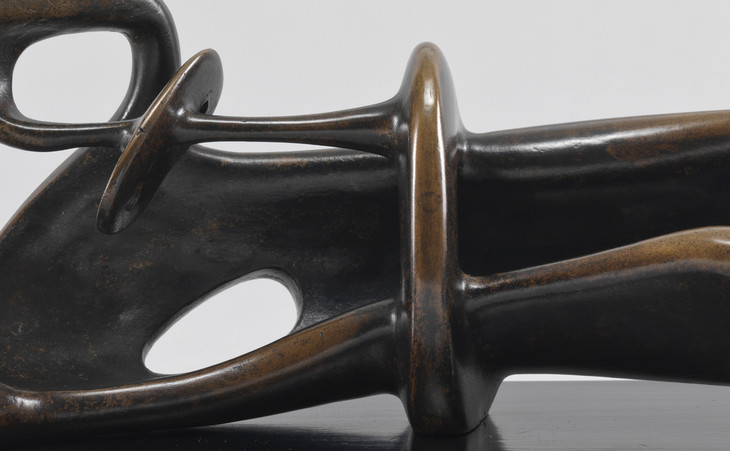
Detail of semi-cylindrical body and hole of Reclining Figure 1939, cast 1959
Tate T00387
© The Henry Moore Foundation. All Rights Reserved
Fig.2
Detail of semi-cylindrical body and hole of Reclining Figure 1939, cast 1959
Tate T00387
© The Henry Moore Foundation. All Rights Reserved
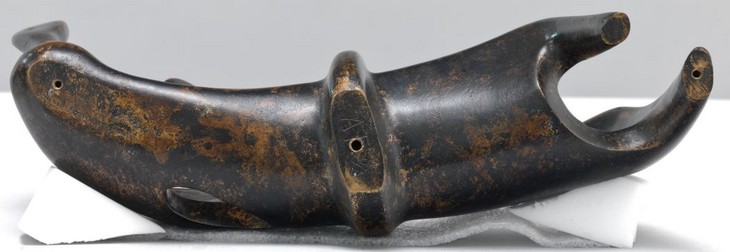
Underside of Reclining Figure 1939, cast 1959
Tate T00387
© The Henry Moore Foundation. All Rights Reserved
Fig.3
Underside of Reclining Figure 1939, cast 1959
Tate T00387
© The Henry Moore Foundation. All Rights Reserved
When seen from the front the semi-cylindrical form creates a concave hollow emphasised by the presence of a hole that pierces the form in what can be understood to be abdomen region (fig.2). The tubular shape of the body is enhanced by the addition of a ring or disk at the hip area that circles the semi-cylindrical form linking its two edges. Towards the right of the sculpture the two edges of the tubular body morph into legs. Here the concave form that links the two legs is reminiscent of a long skirt that nonetheless allows for the discernment of individual limbs. The left thigh is slightly higher and longer than the left so that the legs run parallel to each other. The legs are bent at the knee where they point downwards to the base. When removed from its base the footprint of the sculpture as a whole can be seen to follow a crescent-shaped curve; the right shoulder and right leg are positioned on the frontal plane while the central abdomen curves backwards (fig.3).
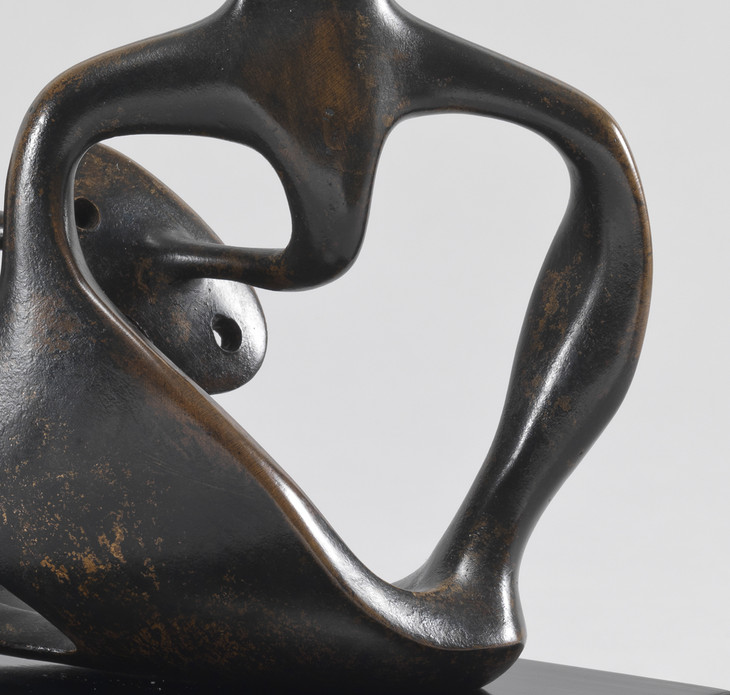
Detail of Reclining Figure 1939, cast 1959 showing disk shape with two holes denoting breasts
Tate T00387
© The Henry Moore Foundation. All Rights Reserved
Fig.4
Detail of Reclining Figure 1939, cast 1959 showing disk shape with two holes denoting breasts
Tate T00387
© The Henry Moore Foundation. All Rights Reserved
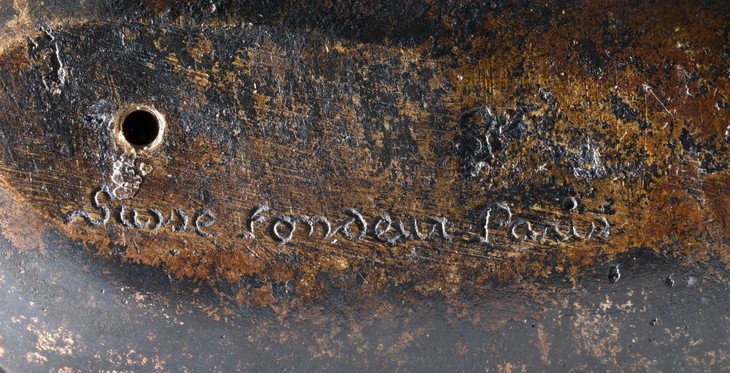
Detail of foundry mark on underside of Reclining Figure 1939, cast 1959
Tate T00387
© The Henry Moore Foundation. All Rights Reserved
Fig.5
Detail of foundry mark on underside of Reclining Figure 1939, cast 1959
Tate T00387
© The Henry Moore Foundation. All Rights Reserved

Detail of edition number on underside of Reclining Figure 1939, cast 1959
Tate T00387
© The Henry Moore Foundation. All Rights Reserved
Fig.6
Detail of edition number on underside of Reclining Figure 1939, cast 1959
Tate T00387
© The Henry Moore Foundation. All Rights Reserved
The sculpture rests on its wooden base at four points: the right elbow, the hip or buttocks, and the right and left feet. Seen from the front the sculpture appears to lift itself off the base and locate most of its weight on its elbow. The sculpture is attached to the base with three screws that pass through the base and into the sculpture at the elbow, the central ring section, and the left foot. Below the hole the elbow is engraved with the foundry mark ‘Susse Fondeur, Paris’ (fig.5), and the edition number ‘AT 0/8’ is stamped underneath the central ring (fig.6). This means that the sculpture was cast in an edition of eight plus one additional cast for the artist. Moore’s artist’s copies were usually numbered 0.
The sculpture has been patinated chemically to heighten contrasts between different areas (fig.7). The inner curved wall of the semi-cylindrical form is a dark brown colour while its edges are highlighted in golden brown. Throughout the sculpture the thinner, linear elements have been presented in this lighter colour.
Although it was not cast in bronze until 1959 this sculpture was originally made in lead in 1939.1 From about 1955 and into the 1960s Moore reassessed many of his earlier unique sculptures made in lead, concrete and wood, and a number of these were cast and editioned in bronze. Among these new editions was Stringed Figure 1938 (Tate T00386), which was cast in bronze in 1960 after a unique wood original. In a letter dated 13 April 1961 to Martin Butlin, assistant keeper of the modern collection at Tate, Moore explained with regard to the then recently acquired Reclining Figure that, ‘as with many others I made in lead around that time [the late 1930s], I have since made a bronze edition, because lead is a very vulnerable material and can be scratched even by a finger nail’.2
In 1973 Moore elaborated that at the time he was making lead sculptures:
I didn’t know about lead – I didn’t know that you could put a little antimony with it and make it hard – so since then all the leads have been damaged. And they come back to me to be repaired, or to be salvaged – because in some cases if you drop a lead on the floor, on a hard floor, it will just collapse, whereas bronze is almost indestructible. So, to save the idea, I re-cast them into bronze.3
Although Moore stated that his decision to re-cast earlier lead sculptures was due to the vulnerability of the material and to ‘save the idea’, the decision to re-cast works in multiples may also have been driven by financial reasons. In the early 1940s Moore found that the sale of his small bronze maquettes, such as Maquette for Madonna and Child 1943 (Tate N05600), could off-set the costs of casting much larger sculptures in bronze. In addition, by the mid-1950s Moore’s work was in much greater demand from collectors and patrons and re-casting smaller works in editions of eight or nine would have been a practical way of satisfying this demand. During the 1950s Moore worked with a number of different London-based commercial galleries including Roland Browse and Delbanco, Gimpel Fils, and the Leicester Galleries, all of which sold small, domestic scale sculptures by Moore that could be placed on table tops. In July 1958 Marlborough Fine Art, which had galleries in London and New York, became Moore’s principal dealers, and it bought the complete bronze edition of Reclining Figure in 1959, a move that testified to the confidence they had in selling Moore’s work.
Although his teaching duties as Head of the Sculpture Department at the Chelsea School of Art kept him in London for much of his time, in 1935 Moore bought a cottage called Burcroft near Canterbury in Kent. In a letter dated 30 April 1939 to his friend Arthur Sale, Moore explained that ‘We go [to Burcroft] whenever we can be free from London because I can work better there’.4 It is likely that the original lead Reclining Figure was made at Burcroft, cast by Moore in a kiln constructed on the property. This practice of ‘backyard casting’ was relatively common among artists producing small scale sculptures in the 1930s, and lead was a particularly favoured material due to its low melting point.
Thanks to the financial security of his teaching post Moore was able to employ Bernard Meadows as an assistant. Meadows was a sculpture student at Norwich School of Art and later the Royal College of Art, London, and worked for Moore during his summer vacations from 1936 to 1940. On 9 December 1987 Tate curator Judith Collins interviewed Meadows with a focus on his role in the creation of Moore’s lead sculptures. According to Collins, Meadows ‘remembers casting lead pieces during the summer months of 1938 and 1939’, and that he ‘then stayed on alone at Burcroft in the winter holidays of 1938 and 1939 working on the lead casts’.5 Collins continued:
Meadows recalled how, once Moore had decided to cast in lead, he sought technical information both from a foundry and from the local blacksmith, who encouraged him to use bellows with his kiln. The metal came from lengths of lead armature piping used at Chelsea School of Art, and Moore also decided to melt down one of his earlier lead figures, the Seated Figure of 1930. Meadows and Moore improvised a kiln in the field belonging to Burcroft, building a tunnel-like structure incorporating a domestic terra-cotta fireback. A fire was built in this structure, with Meadows working the bellows, and the success of this procedure depended largely on the wind direction at the time.6
In order to create the original lead version of Reclining Figure Moore first made his model in a malleable material, most likely wax. In 1960 Moore recounted that during his experiments with backyard casting he discovered that he could skip one of the usual stages of the lost-wax process by modelling directly in wax.7 Meadows recalled in 1987 that the wax used for the lead sculptures made between 1938 and 1940 was ‘beeswax, bought from Boots the Chemist’ in Canterbury.8 Having modelled the original wax sculpture it was then encased in a refractory material, most likely plaster mixed with an aggregate of ground-up pottery. Moore then used the direct or lost-wax casting technique, whereby the casing containing the wax was placed in the kiln and heated so that the wax could be melted out. Molten lead was then poured into the sculpture-shaped void left inside the casing. In light of her conversation with Meadows, Collins explained that ‘the lead was melted down in a large domestic saucepan, one of Irina Moore’s, over a primus stove in the studio. The main consideration was whether the saucepan handle could withstand the weight of the lead when the saucepan was lifted and carried outside to the mould for the pouring of the molten metal’.9 When the lead had cooled and hardened the outer casing would have been removed to reveal the sculpture inside. However, one of the disadvantages of working in wax and using this direct lost-wax casting method was that since there was only one original sculpture, there was only one opportunity to cast the sculpture. If any stage in the process went wrong, the sculpture would be lost. This element of risk may explain why Mary Moore, the artist’s daughter, recounted that Moore ‘thought he’d try lead casting at home, because by then he was so macho and he just thought, “Well, why can’t I do it?”’.10
It is probable that the lead Reclining Figure was one of a number of sculptures made between August and early October 1939. In a letter to his friend the critic Herbert Read dated 9 October Moore noted:
At present and during the last few weeks I’ve been doing ideas and small figures for metal. Bernard Meadows, the student who’s helped me with roughing out and odd jobs during the last 2 or 3 summers is here with us, probably until he’s called up [to serve in the Second World War] or gets a job, because the Royal College of Art hasn’t started again – And between us we’ve cast the wax models I make, into lead. After casting they need quite a lot of working on, but in the last month out of the 8 or 9 we’ve cast, I’ve completed three or four and have just sent two for the Leicester Galleries mixed Autumn show they’re having.11
The original lead Reclining Figure was included in the exhibition Surrealism Today held at the Zwemmer Gallery in 1940 and can be seen in a photograph, adjacent to Moore’s large stringed sculpture Bird Basket. In art historian Michel Remy’s 1999 survey of surrealism in Britain Moore was identified as an active member of a group of artists, writers and critics advocating surrealist ideas and motifs. Remy suggested that one of the aims of surrealism was to unveil the unseen, and that ‘in the 1939 Reclining Figure, holes, tunnels and cavities seem to be aligned and invite the penetration of matter’.12 However, despite his work being seen within the context of surrealist art, Moore’s links to surrealism were not clear cut. In the early 1970s the surrealist painter Gordon Onslow Ford, who owned the lead original of Reclining Figure and who organised Surrealism Today, distinguished between Moore’s artistic ambitions and those of the surrealists:
I think that when Herbert Read and Henry Moore became interested in Surrealism they thought of it as a popular movement that might show people that they had to change the way in which they were living. I do not believe that Surrealism was ever central to Moore although he sometimes showed with the Surrealists. He did not share [André] Breton’s feeling that there was no other alternative in art at the time and Surrealism was the great hope. In comparison to the Surrealists – who were often amateurs trying something that couldn’t have been done before, Moore came from a traditional art background and had a thorough professional training. Even at his most experimental Moore – unlike the Surrealists – has always been involved in continuing the tradition of European man, and his changes have been humanistic changes.13
Gordon Onslow Ford, who was the grandson of the Victorian sculptor Edward Onslow Ford, moved to Paris in 1937 with the intention of forging a career as a painter. A year later he was invited to join André Breton’s surrealist group and was noted for being one of its youngest members. The Second World War curtailed his time in France and Onslow Ford retuned to London in 1939. It is likely that he purchased the original lead version of Reclining Figure in 1940 after organising Surrealism Today. The painter referred to the sculpture as ‘the fire engine’, possibly because its arrangement of tubes and armatures reminded him of water hoses.14
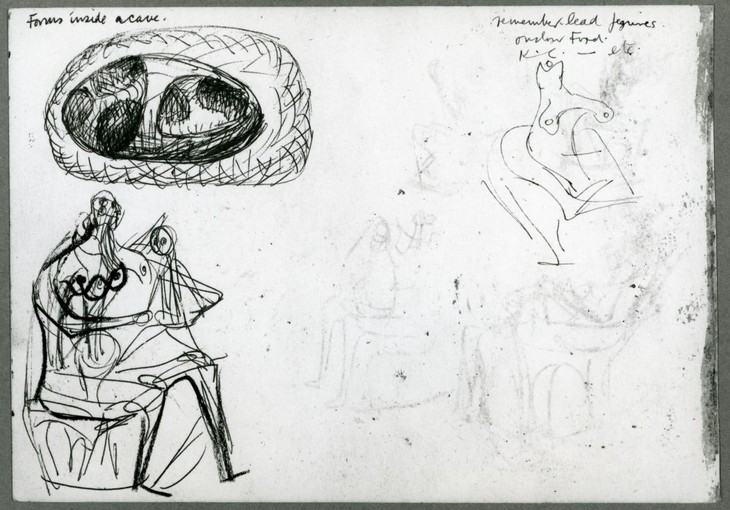
Henry Moore
Seated Mother and Child and Internal/External Figure 1947–8
Wax crayon, coloured crayon, pen and ink on paper
Private collection
© The Henry Moore Foundation. All Rights Reserved
Fig.8
Henry Moore
Seated Mother and Child and Internal/External Figure 1947–8
Private collection
© The Henry Moore Foundation. All Rights Reserved
The various table-top sculptures that Moore cast during the late 1950s and 1960s have been discussed by art historians and critics as though they dated from the late 1930s, when their unique lead, concrete or wood originals were made.17 For example, in 1968 the critic David Sylvester discussed Moore’s wooden stringed sculptures made in the late 1930s alongside bronze editions cast in the 1960s, regarding the delayed casting of some sculptures as unproblematic since stringed works were ‘made to be cast’, adding that ‘a few pieces not cast at the time have been cast in bronze at various times since’.18 While Moore may have had different, unrecorded objectives for creating Reclining Figure in 1959, it is nonetheless instructive to consider it in light of the reclining figure sculptures he made during the 1930s.
The reclining figure propped up on its elbows with raised knees emerged as a central motif in Moore’s work during the late 1920s. Moore had carved his first reclining figure around 1924 but took up the subject with greater seriousness in 1929 and it became his most frequently recurring subject. In 1947 Moore accounted for his preference for the reclining figure, stating:
There are three fundamental poses of the human figure. One is standing, the other is seated, and the third is lying down ... But of the three poses, the reclining figure gives most freedom compositionally and spatially. The seated figure has to have something to sit on. You can’t free it from its pedestal. A reclining figure can recline on any surface. It is free and stable at the same time. It fits in with my belief that sculpture should be permanent, should last for eternity. Also, it has repose, it suits me – if you know what I mean.19
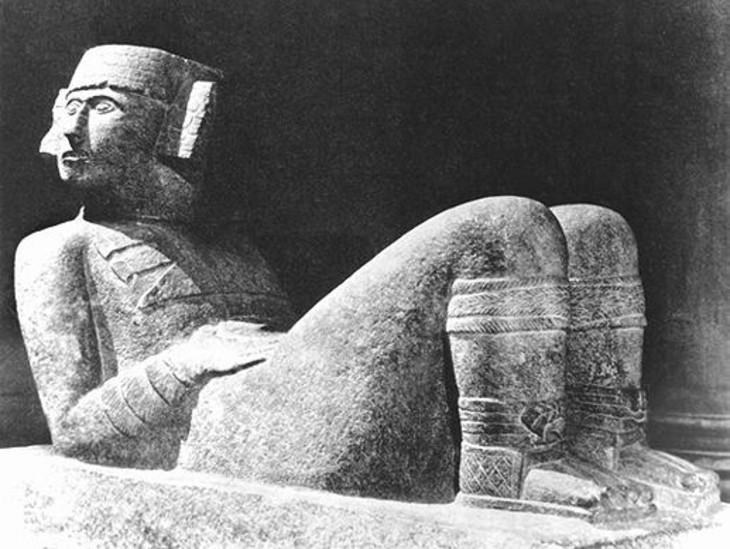
Toltec-Mayan sculpture of Chacmool from Chichén Itzá, c.900–1000
Limestone
1050 x 1480 mm
Museo Nacional de Antroplogia, Mexico City
Fig.9
Toltec-Mayan sculpture of Chacmool from Chichén Itzá, c.900–1000
Museo Nacional de Antroplogia, Mexico City
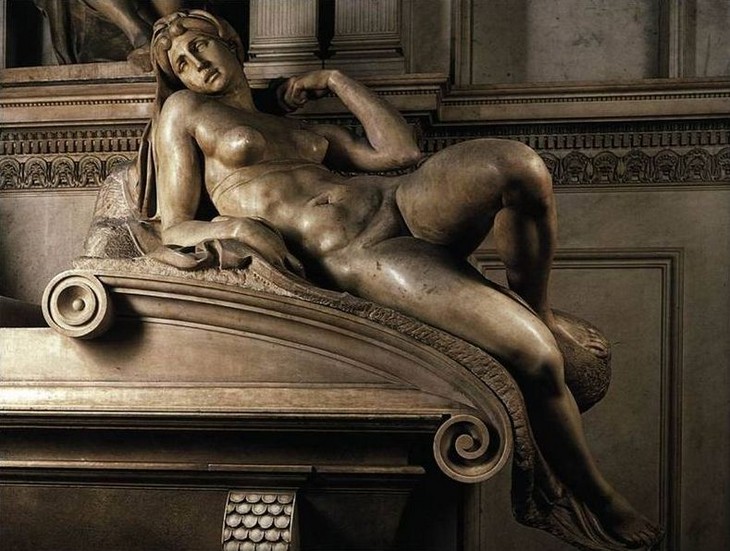
Michelangelo
Dawn c.1520–34
Medici Chapel, Basilica of San Lorenzo, Florence
Fig.10
Michelangelo
Dawn c.1520–34
Medici Chapel, Basilica of San Lorenzo, Florence
The origins of Moore’s fascination with the subject of the reclining figure cannot be pinpointed to a single definitive source. For example, in the catalogue to Moore’s 1968 exhibition at the Tate Gallery, images of a reclining Chacmool, a rain spirit of the ancient Toltec-Mayan culture (fig.9), were reproduced alongside Michelangelo’s carvings of allegorical figures in the Medici Chapel in Florence under the title ‘comparative material’. However, the author of the catalogue, the critic David Sylvester, noted that prior to Moore’s trip to Italy in the early 1920s Moore had only made one (male) reclining figure, and that the subject only took hold of Moore’s imagination upon his return. Central to Sylvester’s argument was the importance of Michelangeo’s work, in particular the sculpture Dawn c.1520-34 (fig.10). Sylvester argued that even when Moore’s figures became more abstract they nonetheless had ‘poses which are the perogative of the Mediterranean tradition’.20
By choosing the subject of the reclining female figure for his sculptures, Moore was free to experiment with sculptural forms, both compositionally (in the position of the body and its limbs) and spatially (in the ways in which the figure’s limbs projected into space and interacted with spatial gaps). In addition to these perceived virtues, Moore also believed that because the subject of the reclining figure was known and understood, he was not tied to creating naturalistic artworks. On the subject of his reclining figures Moore was clear that he did not seek to imbue his sculptures with a specific meaning, but rather to use the motif as a starting-point for formal experiments:
I want to be quite free of having to find a ‘reason’ for doing the Reclining Figures, and freer still of having to find a ‘meaning’ for them. The vital thing for an artist is to have a subject that allows [him] to try out all kinds of formal ideas – things that he doesn’t yet know about for certain but wants to experiment with, as Cézanne did in this ‘Bathers’ series. In my case the reclining figure provides chances of that sort. The subject-matter is given. It’s settled for you, and you know it and like it, so that within it, within the subject that you’ve done a dozen times before, you are free to invent a completely new form-idea.21
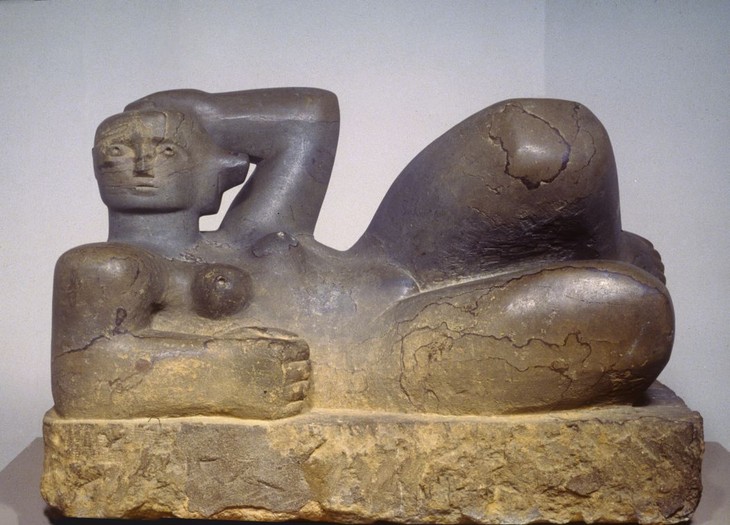
Henry Moore
Reclining Figure 1929
Brown Hornton stone
Leeds City Art Gallery
© The Henry Moore Foundation. All Rights Reserved
Fig.11
Henry Moore
Reclining Figure 1929
Leeds City Art Gallery
© The Henry Moore Foundation. All Rights Reserved
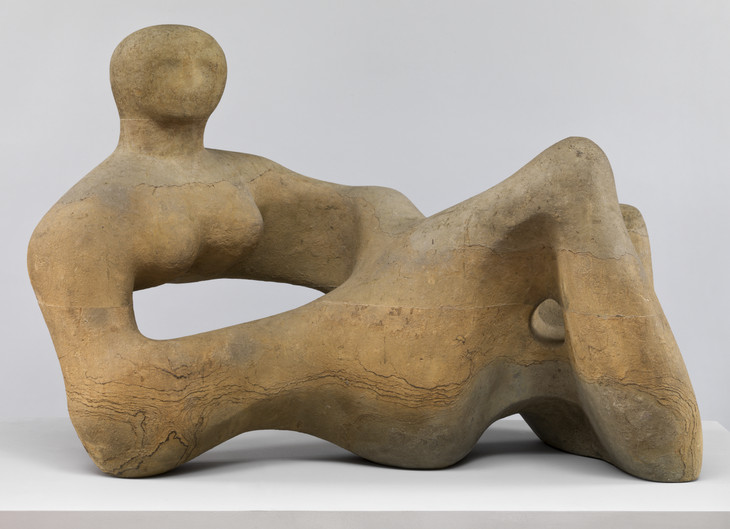
Henry Moore OM, CH 1898–1986
Recumbent Figure 1938
Green Hornton stone
object: 889 x 1327 x 737 mm, 520 kg
Tate N05387
Presented by the Contemporary Art Society 1939
© The Henry Moore Foundation. All Rights Reserved
Fig.12
Henry Moore OM, CH
Recumbent Figure 1938
Tate N05387
© The Henry Moore Foundation. All Rights Reserved
Reclining Figure may be understood as a development of Moore’s earlier Reclining Figure 1929 (fig.11) and Recumbent Figure 1938 (Tate N05387; fig.12), which were carved in Brown and Green Hornton stone respectively. Like Reclining Figure both of these earlier sculptures present a female figure lying down with her belly and legs extending to the right of her upright head and shoulders. In all three sculptures the figure rests on her right elbow and her knees are bent, and they each have rounded projecting breasts. In the later bronze work, however, Moore dispensed with the heavy, block-like composition of the 1929 sculpture and the bulbous, globular forms of Recumbent Figure. Instead, the forms of Reclining Figure are thinner and more skeletal.
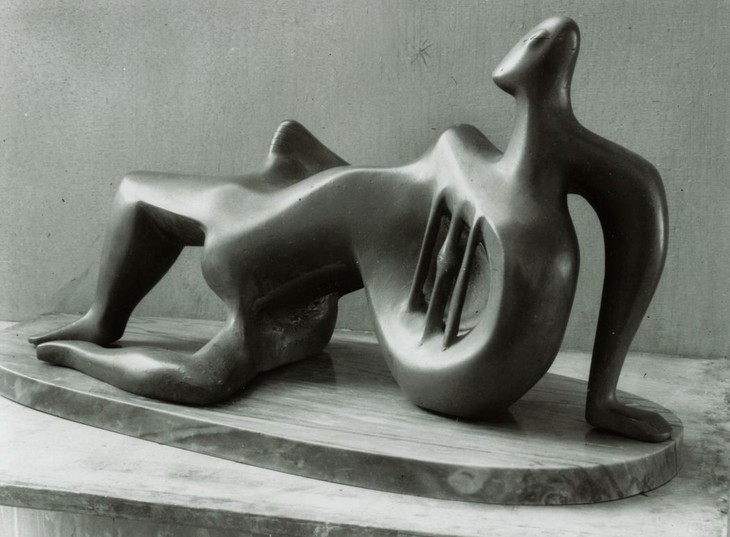
Henry Moore
Reclining Figure 1931
Lead
© The Henry Moore Foundation. All Rights Reserved
Fig.13
Henry Moore
Reclining Figure 1931
© The Henry Moore Foundation. All Rights Reserved
The ‘spatial forms’ of Reclining Figure became the most talked about feature of the sculpture in art historical accounts. For example, the critic Herbert Read suggested that in his use of tubular rods Moore ‘outlines the volume rather than occupies it; here the body is reduced to an open structure which, however, is not a reduction of the flesh to reveal the skeletal sub-structure, but a merging of bone and flesh into one coherent rhythm’.25 In 1968 Reclining Figure was exhibited in Moore’s retrospective at the Tate Gallery in a thematic grouping called ‘Holes and Hollows’, where it was presented as an example of how the use of modelled wax allowed Moore to create sculptures ‘about as open as they ever were to be’.26
The open and linear forms of Reclining Figure may have been influenced by Pablo Picasso’s fragmentation of the body in his paintings, drawings and sculptures. Moore had been aware of Picasso’s work since his student days at Leeds School of Art, and in 1973 reflected that ‘really all my practicing life was as a student, and as a sculptor I have been very conscious of Picasso because he dominated sculpture and painting – even sculpture as well as painting – since Cubism’.27 Moore had first-hand knowledge of Picasso’s work having seen paintings by the Spanish artist at the Mayor Gallery in London in the early 1930s. Moore also made regular trips to Paris, where Picasso lived and worked, and in the summer of 1937 he and a group of artists including Alberto Giacometti, Max Ernst and Roland Penrose were invited by Picasso to his studio to view the progress of his large-scale painting Guernica 1937 (Museo Nacional Centro de Arte Reina Sofia, Madrid).
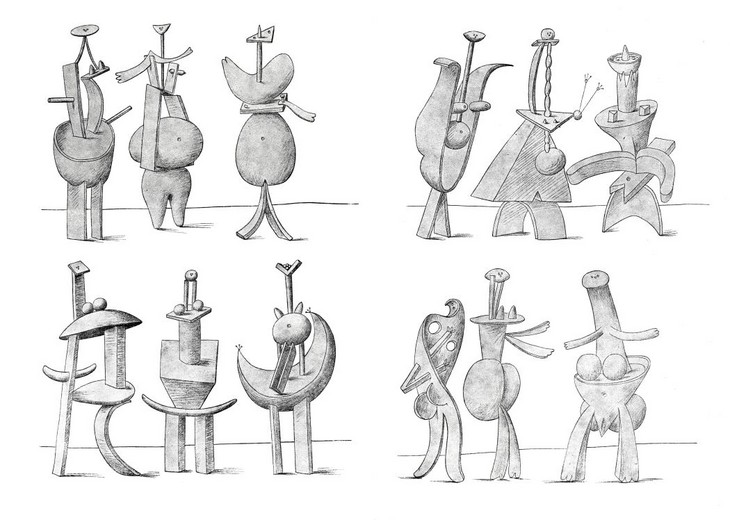
Pablo Picasso
An Anatomy 1933
Reproduced in Minotaure, no.1, 1933, pp.36–7
Fig.14
Pablo Picasso
An Anatomy 1933
Reproduced in Minotaure, no.1, 1933, pp.36–7
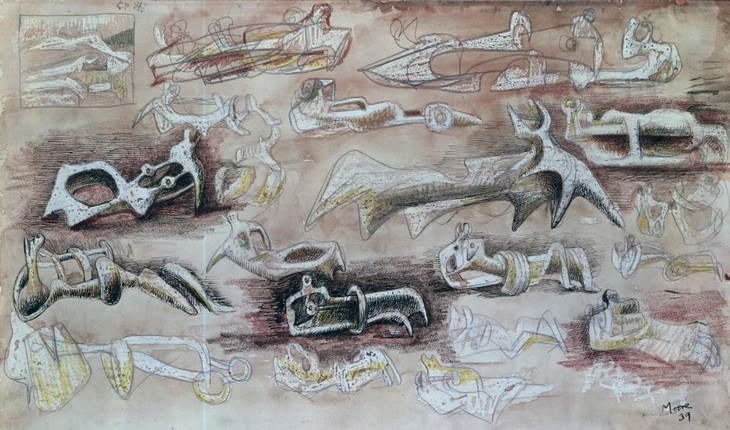
Henry Moore
Studies for Sculptures: Reclining Figures 1939
Graphite, wax, crayon, chalk, watercolour, pen and ink on paper
Private collection
© The Henry Moore Foundation. All Rights Reserved
Fig.15
Henry Moore
Studies for Sculptures: Reclining Figures 1939
Private collection
© The Henry Moore Foundation. All Rights Reserved
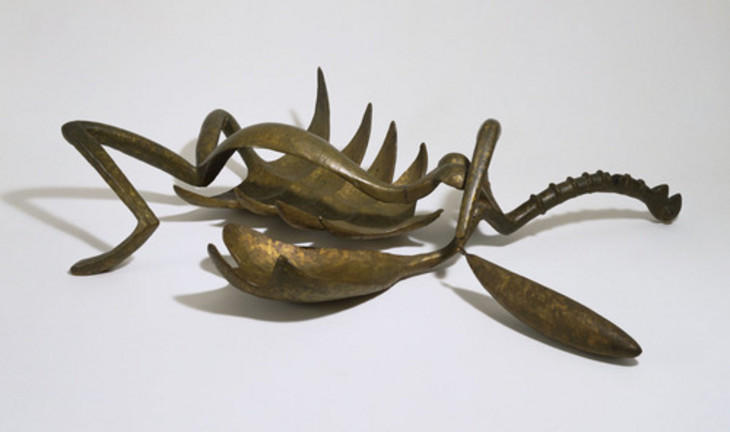
Alberto Giacometti
Woman with her Throat Cut 1932
Bronze
203 x 876 x 635 mm
Museum of Modern Art, New York
© 2013 Artists Rights Society (ARS), New York / ADAGP, Paris
Fig.16
Alberto Giacometti
Woman with her Throat Cut 1932
Museum of Modern Art, New York
© 2013 Artists Rights Society (ARS), New York / ADAGP, Paris
Moore’s description of Giacometti’s figure as wraith-like and made up of armatures could also be applied to Reclining Figure. Moore’s vascular and spectral portrayal of the human body was identified in 1955 by George Wingfield Digby, then curator at the Victoria and Albert Museum, London. Wingfield Digby suggested that many of Moore’s sculptures were reminiscent of bones, and ‘the severed remnants of some human life’.34 For Wingfield Digby, however, the evocation of bones was not to be regarded as macabre or melancholic. He argued instead that ‘the dismemberment theme refers principally to the idea of death as a necessary preliminary to rebirth’, and he cited T.S. Eliot’s poem Ash Wednesday (1927) as a contemporaneous meditation on the interconnectedness of death, rebirth and resurrection: ‘Under a juniper-tree the bones sang, scattered and shining’.35
However, in his 1959 book on Moore German psychologist Eric Neumann discussed Reclining Figure as a symbol of death: ‘everything fruitlike has been melted away from the woman’s body, and its deathly machine-like character is very much to the fore. The reduction to pure line and the evaporation of mass into empty space go far beyond anything suggested in earlier drawings’.36 In contrast to the rotund and fecund female reclining figures epitomised by Recumbent Figure 1938, the ‘deadly and destructive opposite finds expression in the naked skeleton, stripped of all organic fullness and reduced to the spectral machine. The supreme example of this representation of death goddess is the ... figure from late 1939’.37 Such an interpretation may regard Moore’s sculpture as a precursor to the skeletal standing figures of Reg Butler, such as Woman 1949 (Tate N05942), and to the work of a generation of British sculptors preoccupied with the expression of post-war alienation. The smaller disk of the breast plate pierced by a taut line may also be an antecedent to Eduardo Paolozzi’s Forms on a Bow 1949 (Tate T00227).
Prior to the acquisition of Reclining Figure in 1960 Tate held thirteen sculptures by Moore in its collection, most of which were small maquettes. Acquisitions of Moore’s work had been hindered since the 1930s, first by J.B. Manson, Tate’s director between 1930 and 1938, who disliked modern art and who told Tate Trustee Robert Sainsbury, ‘Over my dead body will Henry Moore ever enter the Tate’,38 and then by Moore’s own appointment as a trustee, a position he held between 1941–8 and then 1949–56.39 As a consequence, by the late 1950s the trustees were keen to expand the gallery’s holdings of Moore’s work. After stepping down from his role as a trustee Moore discussed a number of sculptures that could be made available to Tate with the gallery’s then director, Sir John Rothenstein. Moore proposed a list of eight works, which was presented to the trustees at their meeting on 16 May 1957.40 Although this proposed purchase did not occur immediately, the list, which included an example of each of Moore’s different subjects and materials to date, became the blueprint used by the Friends of the Tate for their acquisition of six sculptures by Moore, including Reclining Figure, in 1960. A letter to Moore dated 1961 from Jane Lascelles, Organising Secretary for the Friends, notes that there was no correspondence about the acquisition of these sculptures in the Friends’ files, suggesting that the particulars of the sale – the cost of each work – were agreed verbally with Moore.41 In addition to the artist’s personal cast of Reclining Figure, the other sculptures presented to the gallery in December 1960 were Composition 1932 (Tate T00385), Stringed Figure 1938, cast 1960 (Tate T00386), Helmet Head No.1 1950 (Tate T00388), Mother and Child 1953 (Tate T00389), and Working Model for Unesco Reclining Figure 1957 (Tate T00390).
The current whereabouts of the original lead sculpture remain unknown and the eight bronze casts are believed to be held in private collections.
Alice Correia
January 2013
Notes
See David Sylvester (ed.), Henry Moore. Volume 1: Complete Sculpture 1921–48, London1957, revised edn, London 1988, p.12, no.208, reproduced p.119.
Henry Moore, letter to Martin Butlin, 13 April 1961, Tate Artist Catalogue File, Henry Moore, A23942.
Henry Moore cited in Donald Carroll, The Donald Carroll Interviews, London 1973, p.42, reprinted in Alan Wilkinson (ed.), Henry Moore: Writings and Conversations, Aldershot 2002, p.235.
Henry Moore, letter to Arthur Sale, 30 April 1939, Imperial War Museum Archive, IMW/ART/16597/1. For a transcript of the letter see http://www.iwm.org.uk/collections/item/object/19443 , accessed 11 June 2013.
[Judith Collins], ‘Henry Moore: Reclining Figure 1939’, The Tate Gallery 1984–86: Illustrated Catalogue of Acquisitions Including Supplement to Catalogue of Acquisitions 1982–84, London 1988, p.539.
Henry Moore cited in Donald Hall, ‘Henry Moore: An Interview by Donald Hall’, Horizon, November 1960, reprinted in Wilkinson 2002, p.232.
Mary Moore, ‘Reclining Figure 1939’, in Gregor Muir (ed.), Henry Moore: Ideas for Sculpture, exhibition catalogue, Hauser & Wirth, London 2010, p.137.
Henry Moore, letter to Herbert Read, 9 October 1939, Herbert Read Papers, University of Victoria. A copy of this letter is held in The Henry Moore Foundation Archive. According to the catalogue for the autumn 1939 group exhibition at the Leicester Galleries Moore exhibited a lead stringed figure and a coloured chalk drawing. See Autumn Exhibitions: Selected Paintings, Drawings and Pottery Lent by the Contemporary Art Society. Paintings and Sculpture for Sale by Modern British Artists, exhibition catalogue, Leicester Galleries, London 1939, no.49 and no.137 respectively.
See ibid., p.53. Seldis’s account follows an extended quote by Onslow Ford and it is likely that this information was conveyed to him by Onslow Ford in the early 1970s.
For example, Moore borrowed a lead Reclining Figure from its owner Peter Gregory in 1958 to cast an edition in bronze. See Henry Moore, letter to H.R. Fisher, 18 July 1958, Henry Moore Foundation Archive.
Henry Moore cited in J.D. Morse, ‘Henry Moore Comes to America’, Magazine of Art, vol.40, no.3, March 1947, pp.97–101, reprinted in Philip James (ed.), Henry Moore on Sculpture, London 1966, p.264.
Giovanni Carandente, ‘Reclining Figure 1931’, in David Mitchinson (ed.), Celebrating Moore: Works from the Collection of the Henry Moore Foundation, London 2006, p.126.
Henry Moore, ‘Interview with Elizabeth Blunt’, Kaleidoscope, BBC Radio 4, 9 April 1973, transcript reprinted in Wilkinson 2002, p.167.
This work is Reclining Figure 1939 (private collection). See Chris Stephens (ed.), Henry Moore, exhibition catalogue, Tate Britain, London 2010, reproduced p.157.
Henry Moore cited in John and Vera Russell, ‘Conversations with Henry Moore’, Sunday Times, 24 December 1961, reprinted in Wilkinson 2002, p.152.
Related essays
- Henry Moore and the Values of Business Alex J. Taylor
- Learning from Moore between the Wars: Henry Moore as a Teacher at the Royal College of Art and Chelsea School of Art 1924–39 Rebecca Wade
- Life Forms: Henry Moore, Morphology and Biologism in the Interwar Years Edward Juler
- Erich Neumann on Henry Moore: Public Sculpture and the Collective Unconscious Tim Martin
- Henry Moore's Approach to Bronze Lyndsey Morgan and Rozemarijn van der Molen
Related catalogue entries
Related material
How to cite
Alice Correia, ‘Reclining Figure 1939, cast 1959 by Henry Moore OM, CH’, catalogue entry, January 2013, in Henry Moore: Sculptural Process and Public Identity, Tate Research Publication, 2015, https://www

